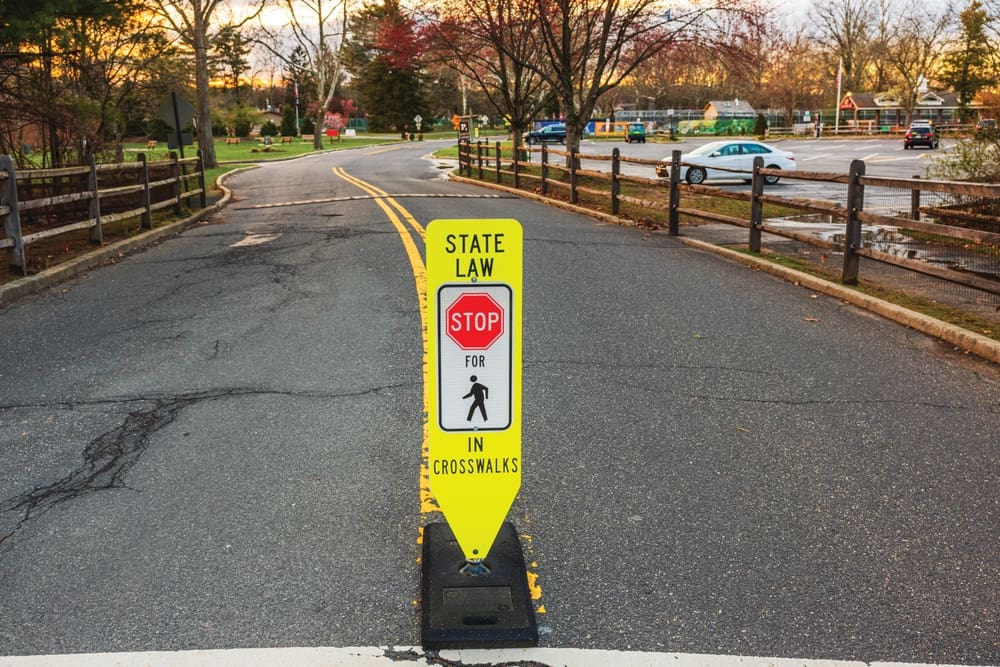Just-released figures sketch a bleak scene of street safety statewide, with walker fatalities hitting a chilling peak. The stats scream for attention and spark a pressing puzzle—what’s driving New Jersey to top the nation in pedestrian deaths, and how can the tide be turned?
A Lethal Pattern Emerges
Those strolling New Jersey’s streets face hazards unmatched elsewhere in America. Per the latest counts, nearly one in three traffic deaths here involves a pedestrian—a slice far more significant than any other state. In raw terms, 2024 saw over 200 walkers perish. Between 2018 and 2022, there were over 2,900 fatal car crashes, and 915 of them involved pedestrians, based on the most recent data from the National Highway Traffic Safety Administration.
In 2024, pedestrian deaths in the state hit a 36-year high, with 221 people killed in crashes — a 29 percent jump from 2023, according to the New Jersey State Police. Roadway deaths plague the nation, no doubt, but New Jersey’s pedestrian toll stands apart. Most states see walkers account for 15 to 20 percent of traffic losses—New Jersey’s rate doubles that.
What’s behind these grim endings? Some stem from drivers throwing caution to the wind. Others unfold at crosswalks, where folks on foot expect safe passage, only to meet distracted or speeding vehicles. Then, there’s a twist: Substance use weaves into the story.
Booze, Drugs, and Fatal Steps
A startling nugget from the new data spotlights drugs and alcohol in these tragedies. Close to half the pedestrians killed in New Jersey last year had traces of intoxicants—be it liquor, weed, or harder stuff—in their systems.
This stirs tricky debates. Are walkers stumbling impaired into harm’s way? Are drivers buzzed behind the wheel, or is it a messy mix of both? With legal pot now in play and nightlife hotspots like Hoboken and Atlantic City humming late, substances loom large in this safety crisis.
Still, beyond intoxication, the state’s pedestrian woes tie back to a deeper flaw—roads and towns built with little thought for those on foot.
Crossings, Speedways, and City Clutter
New Jersey’s streets, from urban grids to suburban lanes, weren’t crafted for walkers. Unlike states where growth unfolded slowly, New Jersey’s boom left scant space for foot-friendly designs. Major routes often skip proper crossings, and sidewalks vanish without warning, nudging people into traffic.
Highways like Route 1, Route 130, and stretches of Route 9 slice through busy zones with few safe passages. Folks dart across lanes to catch a bus or hit a store—sometimes with no other option.
The data echoes what locals sense: some roads are flat-out perilous. State records pin Route 130, carving through central New Jersey, as the deadliest strip for walkers year after year.
But danger isn’t confined to highways. In thriving cores like Newark, Jersey City, and Paterson, drivers blow past crosswalks, and speed rules go ignored. Many say they feel on edge walking even where foot traffic thrives.
New Jersey’s Push to Stem the Tide
With pedestrian deaths spiking to emergency levels, state leaders face heat to act. Governor Phil Murphy has rolled out a bold goal: zero walker fatalities by 2040.
Dubbed “Vision Zero,” the scheme—echoing efforts in places like New York and San Francisco—seeks to reshape roads, tighten traffic policing, and hoist pedestrian safety to the forefront. Ideas on the table include:
- Capping speeds in danger zones
- Adding signals that favor walkers
- Carving out bike paths and broader sidewalks
- Hiking fines for drivers who don’t yield
- Boosting campaigns to wake folks up to road risks
Promising? Sure. But skeptics grumble that progress crawls too slow. Big road fixes take years, leaving walkers exposed in the meantime.
What Can Folks Do Today?
Until sweeping shifts kick in, pedestrians and drivers alike hold keys to safer streets.
For those on foot, experts urge:
- Stick to marked crossings when you can
- Skip the phone while stepping out
- Sport bright gear after dark
- Double-check traffic, even with the walk signal
For those driving:
- Always pause for crosswalk users
- Heed speed caps, especially where crowds roam
- Ditch distractions like texting or snacking
- Never roll impaired
Simple moves, big payoffs—yet without system-wide change, New Jersey’s streets stay treacherous.
A Problem Too Stubborn to Fade Fast
The truth bites: walking here outranks anywhere in the U.S. for risk. The roads weren’t laid out with safety in mind, and climbing death counts hammer that home.
With officials pitching new fixes and locals clamoring for safer paths, hope glimmers. For now, though, each stride on a New Jersey sidewalk carries a shadow of danger.
The New Jersey Digest is a new jersey magazine that has chronicled daily life in the Garden State for over 10 years.
- Staffhttps://thedigestonline.com/author/thedigeststaff/
- Staffhttps://thedigestonline.com/author/thedigeststaff/
- Staffhttps://thedigestonline.com/author/thedigeststaff/
- Staffhttps://thedigestonline.com/author/thedigeststaff/




